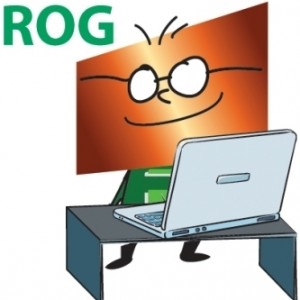
Published
by John Coonrod
Advanced Electronics Solutions
This post authored by John Coonrod, Technical Marketing Manager, and team originally appeared on the ROG Blog hosted by Microwave Journal
Millimeter-wave frequency bands hold valuable spectrum for what lies ahead: fifth-generation (5G) wireless communications and automotive collision-avoidance radar systems. Signals at 60 GHz and higher might have once been thought too high to transmit and receive with affordable circuits. But semiconductor devices and circuit technologies have improved in recent years and millimeter-wave circuits are becoming standard electronic equipment in many car models. Millimeter-wave signals are also expected to play major roles in 5G networks in transferring high-speed data over short distances. For that to happen, low-loss laminates must be available for circuits operating from 60 through 77 GHz, without performance limitations placed by the glass weave effect at those high frequencies. Just what is the “glass weave” effect and what does it have to do with millimeter-wave circuits? It’s all about the wavelengths.
Glass and fiberglass fabrics are commonly used to fortify resin-based circuit laminates. Many PCB materials for higher-frequency use are formed from different woven glass fabrics bound together with epoxy resins. The glass fabrics actually follow precise patterns through the PCB material, with a warp yarn running the length of the material and a fill yarn running the width of the material. The relative permittivity (Dk) values of these different material components are different, so the combination of glass fabrics and epoxy resins form a non-homogeneous medium for signals propagating through transmission lines formed on that medium.
Although such non-homogeneity is less of a concern at lower, RF signals, for millimeter-wave signals with extremely small wavelengths, differences in Dk throughout a propagation medium can result in differences in the characteristic impedance of transmission lines fabricated on that medium. The epoxy resin typically has a lower Dk value than the glass fabric, and the density of the glass fabric will change throughout a PCB as a function of the glass weave pattern. Quite simply, where there is more glass, there is a higher Dk value. Depending upon a particular glass weave, glass bundles can form, resulting in a rise in the Dk value at that location of the PCB material.
In terms of example values, the Dk of a typical resin system may range from 2.0 to 3.0 while the Dk of the glass bundles formed by the glass weave running through the material can be equal to 6.0 or higher. In the open areas of the PCB between glass bundles, the Dk of the laminate will be much lower in value than in those areas around the glass bundles. For lower-frequency signals with relatively large wavelengths, a certain amount of averaging of the effective Dk values of these different sites will take place, resulting in fairly predictable signal propagation behavior that can be accurately analyzed with a computer-aided-engineering (CAE) software simulation program. But at higher, millimeter-wave frequencies, where the signal wavelengths are smaller, the differences in Dk across the PCB due to the glass weave effect can result in transmission-line impedance differences that cause phase shifts at millimeter-wave frequencies.
The types of transmission line used in a high-frequency circuit can also play a part in how significant the role of the glass weave effect plays on the performance of a millimeter-wave circuit. In a multilayer microstrip circuit, for example, due to the randomness of the glass fabric patterns from layer to layer, it is likely that a certain amount of averaging in the Dk will occur across the circuit board and more consistent performance will be achieved in a multilayer circuit construction. Any type of circuit construction in which two or more layers with glass weave are used will benefit from the averaging effects of the multiple layers.
High-speed digital signals such as differential lines operating at data rates beyond 10 Gb/s can be affected by the increased concentrations of glass bundles within PCB material, since the differential lines depend upon tightly maintained phase relationships for their signal information. As with millimeter-wave signals, high-speed differential lines rely upon circuit materials with low conductor and dielectric losses; minimizing signal phase variations as a result of the glass weave effect is a positive circuit material trait for both millimeter-wave and high-speed-digital signal propagation.
Admittedly, the glass and fiberglass fabrics that are combined with the resin systems to form high-performance circuit materials provide a great deal of mechanical strength to the circuit material, although the non-homogeneity that they can introduce to the material at higher frequencies can be an unwanted side-effect at millimeter-wave and high-speed-digital signals. Automotive radar systems, for example, rely upon the reception of reflected pulses at 77 GHz to determine the position of other vehicles in traffic as well as pedestrians. Phase variations resulting from transmission-line skew in a PCB can effectively shift the position of vehicles being detected in traffic.
Fortunately, the benefits of glass material reinforcement can be added to high-frequency circuit laminates without suffering the negative impact of the glass weave effect. Newer circuit materials such as RO4830™ circuit laminates from Rogers Corp. combine glass and resin materials with a type of glass known as “spread glass.” Rather than using a bundled configuration with a tendency to produce uneven distribution of the glass content throughout the laminate, the glass material is spread evenly throughout the epoxy resin, with no openings between the glass bundles. In this way, the layer of glass fabric in the laminate appears very much like a plane of glass, minimizing or eliminating any variations in Dk throughout the laminate.
RO3003™ circuit laminates from Rogers Corp. are low-loss, ceramic-filled, PTFE-based laminates engineered for circuits to 77 GHz and beyond. This laminate does not have woven-glass fabric and therefore has no concern with the glass-weave effect. The laminate features a Dk of 3.00 ± 0.04 across the board for extremely consistent and predictable performance even at millimeter-wave frequencies. These materials have additional characteristics that make them a good fit for millimeter-wave circuits, including very low moisture absorption, nearly ideal thermal coefficient of Dk (TCDk) at 3 ppm/ºC, and a coefficient of thermal expansion (CTE) of 17 ppm/ºC that is closely matched to copper in the x and y axes and equal to 24 ppm/ºC in the z-axis for highly reliable plated through-holes.
For any concerns related to the glass weave effect, RO4830 materials are produced by means of the spread glass approach, thus avoiding the potential for glass bundles from the glass weave effect. RO4830 and RO3003 materials provide the mechanical stability with temperature to maintain consistent low-loss performance even in rigorous automotive operating environments and, as expected, for an emerging number of 5G millimeter-wave data link applications.
Download the ROG Mobile app to access Rogers’ calculators, including the popular Microwave Impedance simulation tool, literature, technical papers, and the ability to order samples of the company’s high performance printed circuit board materials.
Ask an Engineer
Do you have a design or fabrication question? Rogers Corporation’s experts are available to help. Log in to the Rogers Technology Support Hub and “Ask an Engineer” today.
Tags:
5G, ROG Blog, Automotive & EV/HEV, Wireless Infrastructure
Published on Nov 29, 2017

